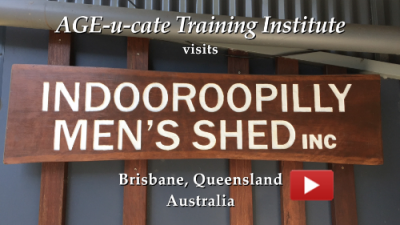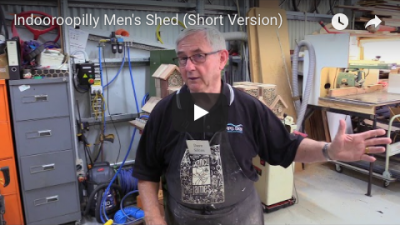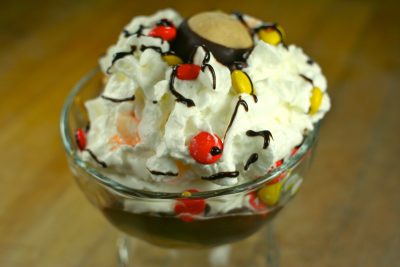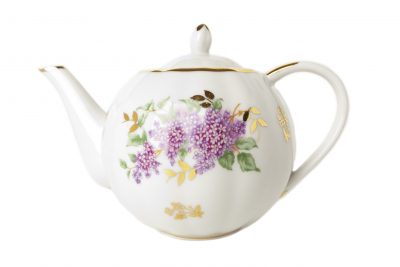
On my recent travels to the beautiful country of Australia, one of the highlights of my trip was my visit to the Indooroopilly Men’s Shed, one of many such sheds throughout the country.
The Australian Men’s Shed Association (AMSA) is the peak body supporting almost 1000 Men’s Sheds and is recognized as one of Australia’s largest male based community development organizations.
Founded in 2007, AMSA is funded by the Federal Department of Health to provide practical support to Men’s Sheds and deliver a wide range of services. It aims to improve the health and wellbeing of members and reduce the number of men who are at risk from preventable health issues that may emanate from isolation.

Through collaboration and strategic partnerships with national, state, territory and health related community services such as beyondblue, Heart Foundation, Department of Veteran Affairs, Cancer Council, AMSA has developed a range of resources and delivered a variety of national initiatives such as “Spanner in the Works?”, a men’s health project.
Tour of the Indooroopilly Men’s Shed with host David SilcoxTheir tagline reads “Shoulder to Shoulder”. Research points to the fact that men communicate with others side-to-side, while women are more inclined to communicate face to face.
Sociologist Harry Brod surmises that the side-by-side shoulder orientation is a way for men to seek intimacy. “Numerous studies have established that men are more likely to define emotional closeness as working or playing side-by-side, while women often view it as talking face-to-face. Men, for example, derive intimacy from playing and watching sports.”
Through the activities and programs offered at the Men’s Shed, it promotes healthy aging, reduces risk of depression, isolation and chronic illness that are often associated with aging adults, especially men.
The objectives of the Indooroopilly Men’s Shed in Queensland include:
- Advance the health and well-being of members.
- Promote men’s health programs.
- Identify and nurture innovative ideas and activities for men.
- Encourage men with widely varying skills.
- Pursue hobbies, pastimes and interests.
- Learn new skills and practice and pass on old skills.
- Learn about their own and other men’s health and well-being.
- By their efforts contribute to their families, their friends, the Sed and the wider community.
- Mentor younger men.
- Promote members’ empathy for fellow men.
- Enhance personal and group self-esteem and pride in accomplishments.
- Foster members’ interest in and assistance to the local community.
For more information visit www.mensshed.org
Pam Brandon is President/Founder of AGE-u-cate® Training Institute and a passionate advocate for older adults and those that serve them.
 As my mother’s Parkinson’s Disease progressed, it was very apparent that food and the mealtime experience became more important to her. So much so, that I remember saying “Mom’s still finds joy in yummy food”. That said, her “yummy” was not always the healthiest, but we wanted her to be happy. We knew that healthy foods were important, but probably not as important as the joy of witnessing her with excitement dig in to a chocolate fudge sundae with extra whipped cream. Now THAT was a quality dining experience!
As my mother’s Parkinson’s Disease progressed, it was very apparent that food and the mealtime experience became more important to her. So much so, that I remember saying “Mom’s still finds joy in yummy food”. That said, her “yummy” was not always the healthiest, but we wanted her to be happy. We knew that healthy foods were important, but probably not as important as the joy of witnessing her with excitement dig in to a chocolate fudge sundae with extra whipped cream. Now THAT was a quality dining experience! I have always been a proponent that if something is just not working well, shifting gears may be a solution. Let’s face it – everything is changing fast these days, so much so that it seems as if technology leads the pack in shifting gears at every juncture of our daily lives.
I have always been a proponent that if something is just not working well, shifting gears may be a solution. Let’s face it – everything is changing fast these days, so much so that it seems as if technology leads the pack in shifting gears at every juncture of our daily lives. I was very fortunate, for when my sweet mom passed, no one else asked for “the teapot”. It wasn’t particularly pretty, and certainly of no monetary value. But to me it was priceless reminder of the tender moments we had together to talk about an endless number of topics that mothers and daughters share. Often accompanied by a scrumptious homemade sweet, we always had back-up favorites in the freezer so we were never without an accompaniment for our favorite Bigelows “Constant Comment”. When we weren’t chatting and sipping, we would often play a quick game of Yahtzee, Gin Rummy or in latter years, our absolute favorite go- to game, Rumikub.
I was very fortunate, for when my sweet mom passed, no one else asked for “the teapot”. It wasn’t particularly pretty, and certainly of no monetary value. But to me it was priceless reminder of the tender moments we had together to talk about an endless number of topics that mothers and daughters share. Often accompanied by a scrumptious homemade sweet, we always had back-up favorites in the freezer so we were never without an accompaniment for our favorite Bigelows “Constant Comment”. When we weren’t chatting and sipping, we would often play a quick game of Yahtzee, Gin Rummy or in latter years, our absolute favorite go- to game, Rumikub.